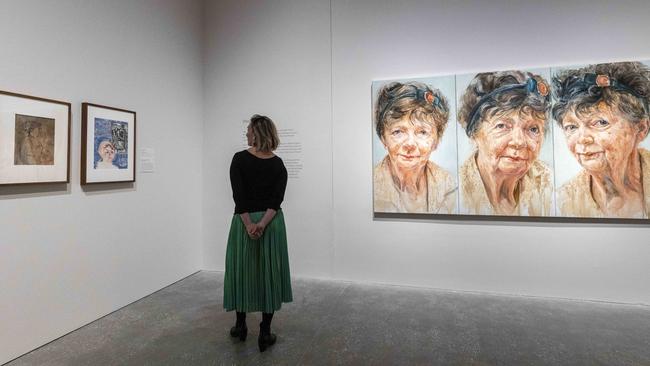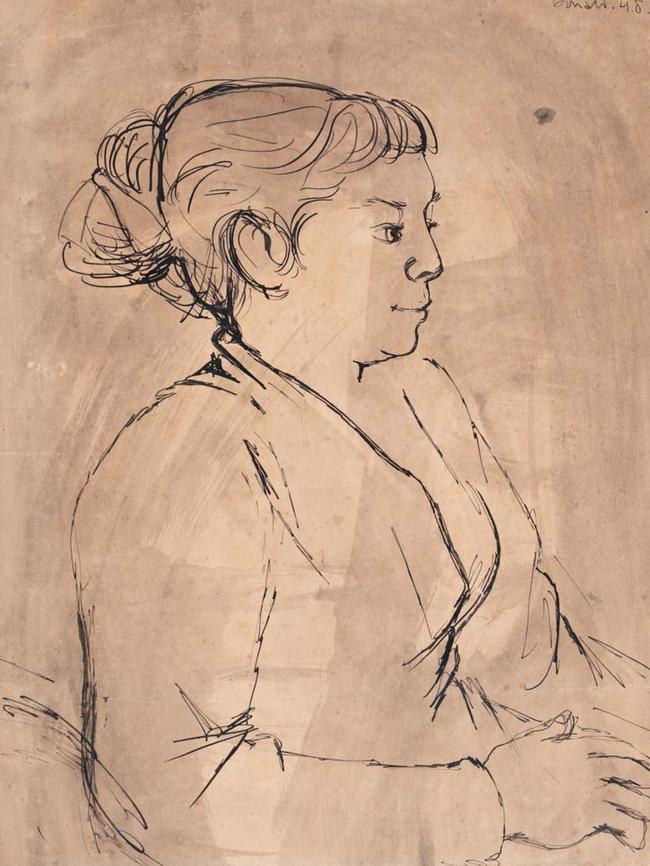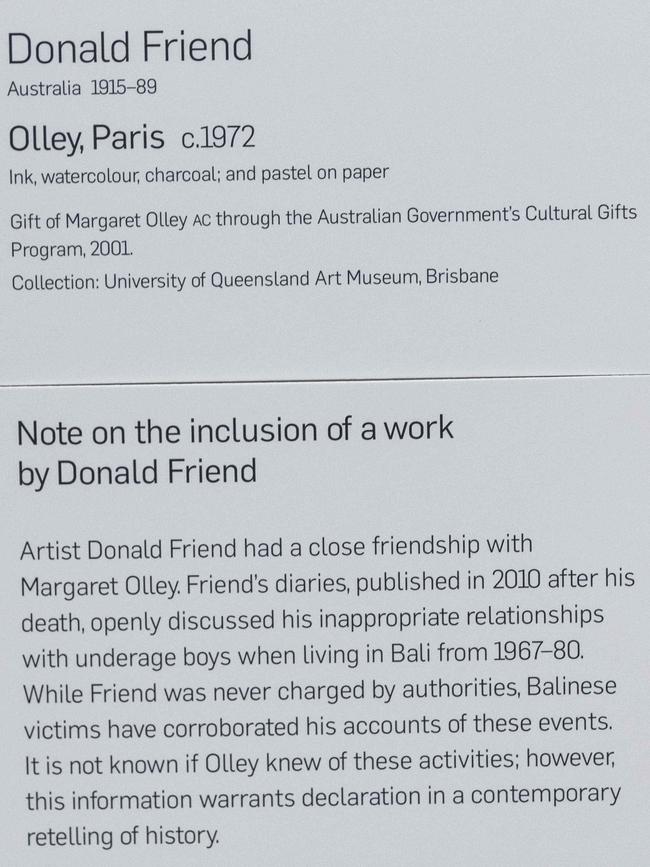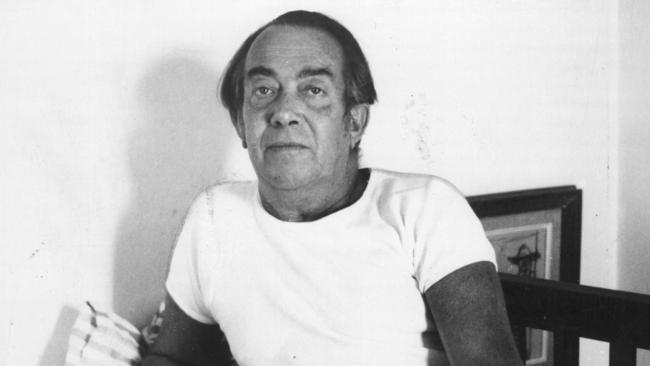Gallery of Modern Art confronts uncomfortable truths about Donald Friend
Queensland’s flagship art gallery quietly moves to reframe debate around problematic artists by acknowledging Donald Friend’s paedophile past.

Queensland’s flagship art gallery has quietly moved to reframe the debate around problematic artists by acknowledging Donald Friend’s paedophile past in a “contemporary retelling of history”.
The acknowledgement has been included in the fine print of a Margaret Olley exhibition that opened on Saturday at the Gallery of Modern Art in Brisbane. As well as about 100 works by Olley, the show features several portraits of her by artists over the years, from Russell Drysdale to William Yang and Ben Quilty. Two small drawings by Friend hang side by side in this section, accompanied by a wall label that makes it clear why the artist has become such a sensitive topic among Australian curators. Under the heading, “A note on the inclusion of a work by Donald Friend,” the label begins by saying that Friend, who died in 1989, enjoyed a close friendship with Olley. It then points out how Friend used his diaries to discuss his “inappropriate relationships with underage boys when living in Bali from 1967-80”.
A similar message appears in the end notes of the catalogue.

“While Friend was never charged by authorities, Balinese victims have corroborated his accounts of these events,” the label reads. “It is not known if Olley knew of these activities, however this information warrants declaration in a contemporary retelling of history.”
Queensland Art Gallery director Chris Saines said galleries had a responsibility to address uncomfortable questions around the creation of art. These questions have taken on fresh urgency amid a renewed focus worldwide on the private lives of artists, from Caravaggio to Picasso and beyond.

“What is said … is simply stating facts that are now widely understood and well known in the Australian art world,” Saines said. “There’s no new information being declared here, no secret being uncovered as it were. We feel that because the world has a very different perspective on serious misconduct on the part of artists in the course of their lives, this is something that in the 21st century is part of the bigger story that museums need from time to time to tell.”
Saines, also the chair of the Council of Australian Art Museum Directors, said the contextual information about Friend had been shared with the public in a “responsible and proportionate way”.




To join the conversation, please log in. Don't have an account? Register
Join the conversation, you are commenting as Logout